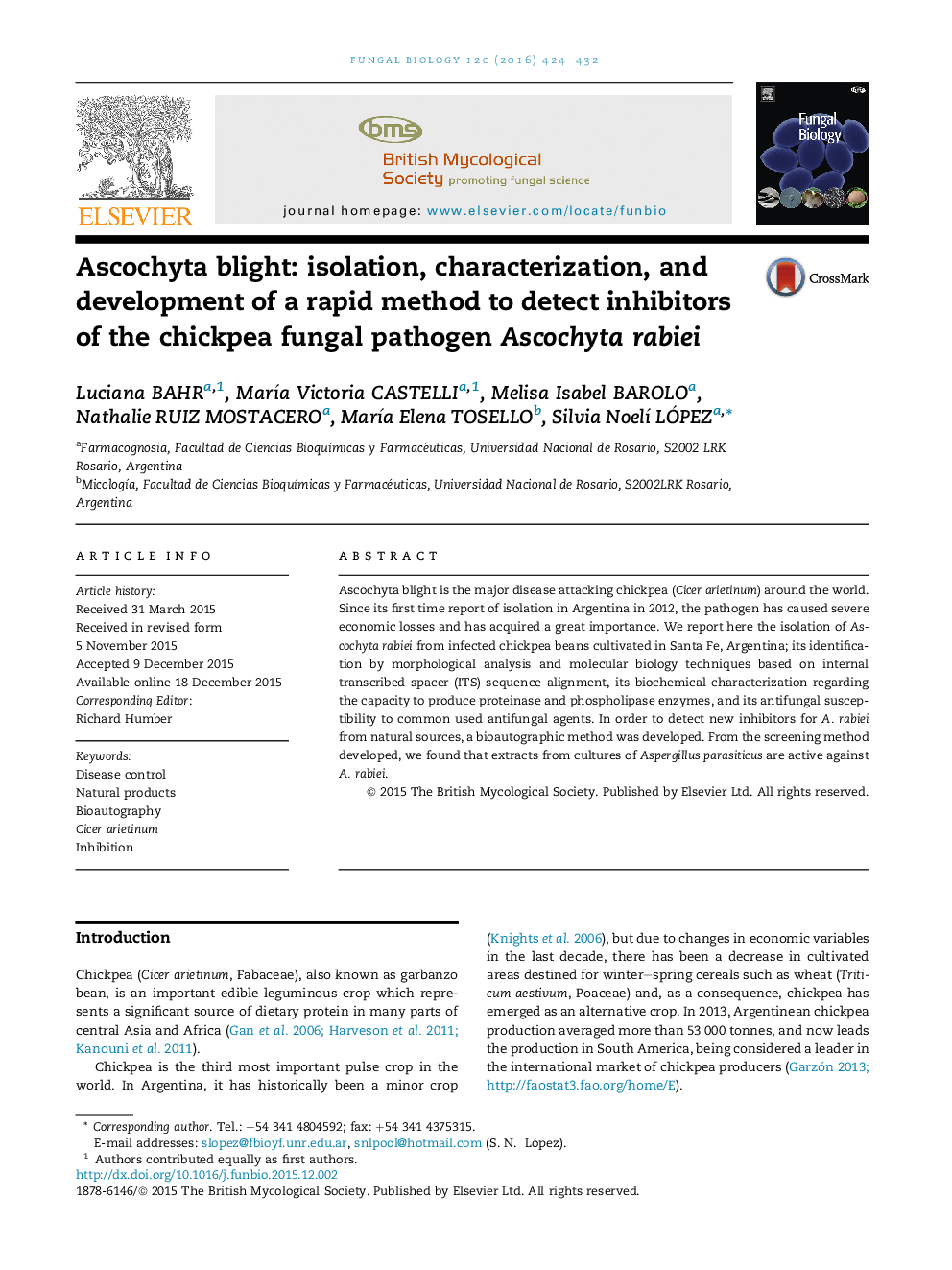| Article ID | Journal | Published Year | Pages | File Type |
|---|---|---|---|---|
| 4356793 | Fungal Biology | 2016 | 9 Pages |
•Identification of Ascochyta rabiei isolates from chickpeas cultivated in Argentina.•Susceptibility profile of A. rabiei by standardized microdilution test.•Development of a bioautographic method to detect natural inhibitors of A. rabiei.
Ascochyta blight is the major disease attacking chickpea (Cicer arietinum) around the world. Since its first time report of isolation in Argentina in 2012, the pathogen has caused severe economic losses and has acquired a great importance. We report here the isolation of Ascochyta rabiei from infected chickpea beans cultivated in Santa Fe, Argentina; its identification by morphological analysis and molecular biology techniques based on internal transcribed spacer (ITS) sequence alignment, its biochemical characterization regarding the capacity to produce proteinase and phospholipase enzymes, and its antifungal susceptibility to common used antifungal agents. In order to detect new inhibitors for A. rabiei from natural sources, a bioautographic method was developed. From the screening method developed, we found that extracts from cultures of Aspergillus parasiticus are active against A. rabiei.
Graphical abstractFigure optionsDownload full-size imageDownload as PowerPoint slide
